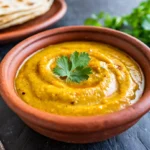
Introduction to Tandoori Sauce
Tandoori sauce, a vibrant blend of spices, yogurt, and herbs, sits at the heart of tandoori cuisine, a culinary tradition that has captivated taste buds worldwide. This sauce not only infuses meats and vegetables with its distinctive flavors but also embodies the rich cultural tapestry of its Indian origins. Let’s delve into the depths of this exquisite sauce, exploring its history, ingredients, and the pivotal role it plays in Indian cooking.
Overview of Tandoori Cuisine
The inception of tandoori cuisine dates back centuries, rooted in the ancient civilizations of the Indian subcontinent. It’s a method defined by cooking marinated meats in a tandoor, a cylindrical clay oven that imparts a smoky flavor, emblematic of North Indian cuisine. The key to its enduring popularity lies in the unique blend of spices known as tandoori sauce. For a deeper understanding of its historical significance, explore the History of Tandoori Cooking, which traces the evolution of this cooking style through time.
Role of Tandoori Sauce in Indian Cooking
In the realm of Indian culinary practices, this sauce is a cornerstone, offering a symphony of flavors that transform ordinary ingredients into extraordinary dishes. Its application extends beyond just marinating; it serves as a base for various gravies and can be adapted into dips. The secret to its versatility lies in its composition—a meticulous selection of spices that are roasted and ground to perfection.
Key Ingredients

The magic of tandoori sauce resides in its ingredients, each contributing its distinct aroma, taste, and color to the final concoction. The following are staples in any authentic tandoori sauce recipe:
- Yogurt: Acts as a tenderizer and base for the spices.
- Ginger and garlic paste: Adds depth and pungency.
- Garam masala: A blend of ground spices that brings warmth and heat.
- Turmeric: Offers earthiness and a vivid yellow hue.
- Red chili powder: Introduces a fiery element.
- Fenugreek leaves: Contribute a subtle bitterness and aromatic fragrance.
The preparation of this sauce is a ritual, a careful layering of flavors that epitomizes the art of Indian cooking. For those intrigued by the nutritional aspects and health benefits of these spices, Health Benefits of Spices in Tandoori Sauce provides insightful details.
As we peel back the layers of tandoori sauce‘s history and composition, we uncover not just a recipe but a story—a narrative woven through time, ingredients, and the hands that prepare it. This sauce is more than a culinary element; it’s a cultural heritage, passed down through generations, continually evolving yet steadfast in its essence. Stay tuned for the next segment, where we delve into the traditional and modern renditions of tandoori sauce, revealing its multifaceted character and timeless appeal.
Making Tandoori Sauce

The creation of the sauce is an art form, a delicate balance of spices, yogurt, and aromatics that culminates in a marinade capable of transforming the simplest ingredients into a feast for the senses. Here, we explore the traditional recipe for tandoori sauce, its variations, and how it can be adapted for various dietary preferences.
Traditional Recipe for Tandoori Sauce
The authentic tandoori sauce recipe is a testament to the richness of Indian culinary traditions, melding the pungency of spices with the coolness of yogurt to create a marinade that’s both flavorful and tenderizing. Here’s a step-by-step guide:
- Ingredients:
- 1 cup thick yogurt
- 2 tablespoons ginger-garlic paste
- 1 teaspoon turmeric powder
- 2 teaspoons garam masala
- 1 teaspoon red chili powder (adjust to taste)
- 1 tablespoon dried fenugreek leaves, crushed
- Salt to taste
- Juice of 1 lemon
- Preparation:
- In a large bowl, whisk the yogurt until smooth.
- Add the ginger-garlic paste, turmeric powder, garam masala, red chili powder, crushed fenugreek leaves, salt, and lemon juice.
- Mix well until all the spices are thoroughly incorporated into the yogurt.
This sauce can be used immediately for marinating meats and vegetables or stored in the refrigerator for up to a week, making it a versatile component in Indian cooking.
Variations of Tandoori Sauce
While the traditional recipe offers a glimpse into the classic preparation of tandoori sauce, there are countless variations that cater to regional preferences and modern tastes. Some popular twists include:
- Mint Tandoori Sauce: Incorporating fresh mint leaves for a refreshing twist.
- Spicy Green Tandoori Sauce: Adding green chilies and coriander for a hotter, more vibrant version.
- Creamy Tandoori Sauce: Using heavy cream instead of yogurt for a richer texture and milder flavor.
Vegan and Gluten-Free Options
In response to dietary restrictions and preferences, tandoori sauce can be easily adapted to suit vegan and gluten-free diets without compromising on flavor:
- Vegan Tandoori Sauce: Substitute dairy yogurt with coconut or almond milk yogurt.
- Gluten-Free Tandoori Sauce: Ensure that all spices used are certified gluten-free.
The adaptability of this sauce not only speaks to its universal appeal but also to the creativity it inspires in kitchens around the world.
Culinary Uses
Tandoori sauce transcends its role as a mere marinade, finding its way into an array of dishes that showcase its versatility and depth of flavor. Below are some of the many ways tandoori sauce can be used to elevate your cooking:
Marinating Techniques
The primary use of tandoori sauce is as a marinade for meats, such as chicken, lamb, and fish, as well as for vegetables like cauliflower and potatoes. The key to a perfect marination lies in:
- Ensuring even coating: Make sure each piece is thoroughly coated in the sauce for consistent flavor.
- Marination time: Ideally, ingredients should be marinated for at least 4 hours, or overnight for deeper flavor infusion.
Tandoori Cooking Without a Tandoor
Not everyone has access to a traditional tandoor oven, but that shouldn’t stop you from enjoying tandoori-flavored dishes. Here are alternative cooking methods:
- Oven Roasting: Marinated items can be roasted in a preheated oven at a high temperature to mimic the charred exterior of tandoor cooking.
- Grilling: For a smoky flavor, grilling marinated meats and vegetables over open flames is an excellent option.
For those exploring innovative cooking techniques without a traditional tandoor, the Innovative Cooking Techniques Without a Tandoor resource offers valuable insights and alternatives.
Pairing with Dishes
Tandoori sauce can also be served as a side or used as a base for other dishes, enhancing meals with its rich flavor profile. Some examples include:
- As a dipping sauce: Diluted with a bit of water or additional yogurt to create a flavorful dip.
- In curries: Used as a base for curries, adding depth and complexity to the gravy.
The extensive applications of the sauce in cooking not only highlight its versatility but also its capacity to transform the ordinary into the extraordinary, infusing meals with the essence of Indian culinary artistry.
As we’ve journeyed through the origins, preparation, and culinary applications of tandoori sauce, it’s evident that this vibrant marinade is more than just a component of Indian cuisine—it’s a celebration of flavor, tradition, and innovation. Whether you’re marinating chicken for a classic tandoori dish, exploring variations, or adapting it to meet dietary needs, this recipe offers endless possibilities for culinary creativity.

Ultimate Guide to Tandoori Sauce: Recipes & Tips
- Total Time: 15 minutes
- Yield: 1 cup 1x
Description
Tandoori sauce, a vibrant blend of spices, yogurt, and herbs, sits at the heart of tandoori cuisine, a culinary tradition that has captivated taste buds worldwide. This sauce not only infuses meats and vegetables with its distinctive flavors but also embodies the rich cultural tapestry of its Indian origins.
Ingredients
1 cup thick yogurt (preferably Greek yogurt for its thickness and tanginess)
2 tablespoons ginger-garlic paste
1 teaspoon turmeric powder
2 teaspoons garam masala
1 teaspoon red chili powder (adjust based on heat preference)
1 tablespoon dried fenugreek leaves (kasuri methi), crushed
Salt to taste
Juice of 1 lemon
Optional: 1-2 tablespoons vegetable oil or mustard oil for added richness
Instructions
Gather Ingredients:
Start by assembling all your ingredients to ensure a smooth preparation process.
Mix Dry Spices:
In your mixing bowl, combine the dry spices—turmeric powder, garam masala, red chili powder, and a pinch of salt. Mix these together to evenly distribute the flavors.
Add Ginger-Garlic Paste:
To the dry spices, add 2 tablespoons of ginger-garlic paste. This paste is a cornerstone of Indian cooking, contributing a deep, aromatic base to the tandoori sauce.
Incorporate Yogurt:
Add 1 cup of thick yogurt to the spice mixture. Greek yogurt is recommended for its thickness and slight tang, which balances the heat of the spices.
Mix Well:
Using a whisk or a spoon, mix all the ingredients until you achieve a smooth, homogenous mixture. Ensure that no lumps remain and the spices are well incorporated into the yogurt.
Lemon Juice and Oil:
Squeeze the juice of one lemon into the mixture. The acidity of the lemon not only adds flavor but also helps in tenderizing the meat. If using, add 1-2 tablespoons of oil at this stage. Oil adds richness and helps carry the flavors into whatever you’re marinating.
Add Fenugreek Leaves:
Crush the dried fenugreek leaves (kasuri methi) between your palms to release their aroma, then stir them into the sauce. Fenugreek leaves add a subtle but distinctive flavor to the tandoori sauce.
Final Seasoning:
Taste the sauce and adjust the seasoning if necessary. Depending on your preference, you might want to add more salt or lemon juice.
Marinate:
Your tandoori sauce is now ready to use as a marinade for chicken, lamb, fish, or vegetables. Coat your choice of protein or vegetables evenly with the sauce. For the best results, allow the items to marinate in the refrigerator for at least 4 hours or, ideally, overnight.
Cook as Desired:
After marination, cook your items using your preferred method, such as grilling, roasting, or baking, until properly cooked through.
- Prep Time: 15 minutes
- Cook Time: 0 minutes
- Category: SAUCE
- Method: No Bake
- Cuisine: INDIAN
Nutrition
- Serving Size: 2 tablespoons
- Calories: 40 calories
- Sugar: 2 grams
- Sodium: 150 mg
- Fat: 2 grams
- Saturated Fat: 0.5 grams
- Unsaturated Fat: 1 gram
- Trans Fat: 0 grams
- Carbohydrates: 4 grams
- Fiber: 0 grams
- Protein: 2 grams
- Cholesterol: 5 mg
Keywords: tandoori sauce, tandoori marinade, Indian barbecue sauce, spicy yogurt marinade
